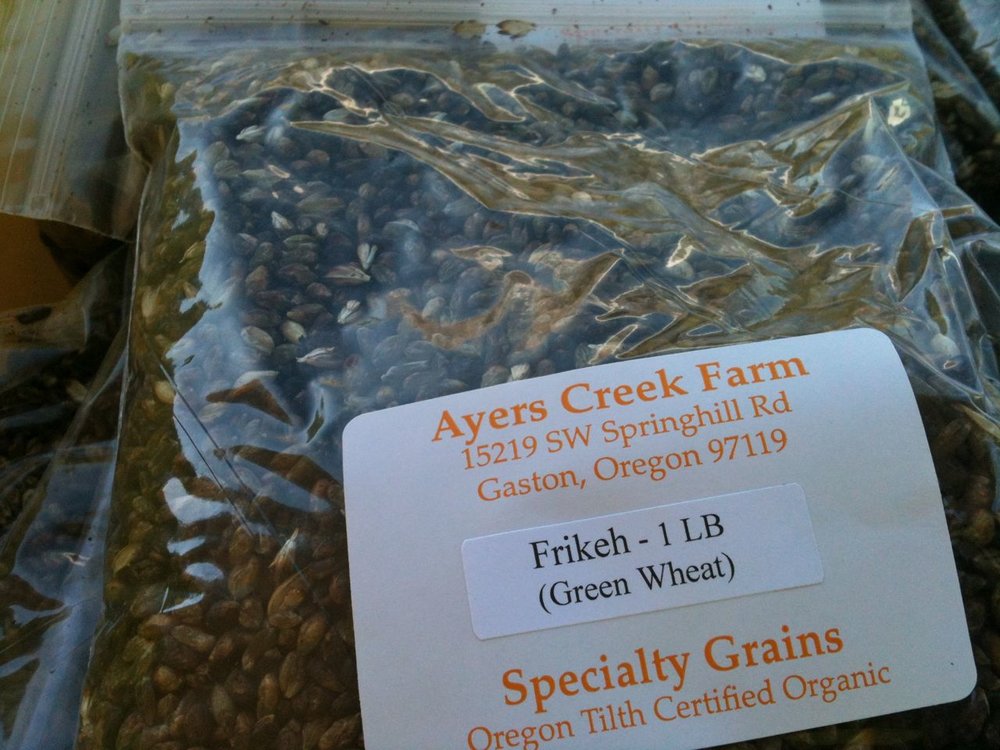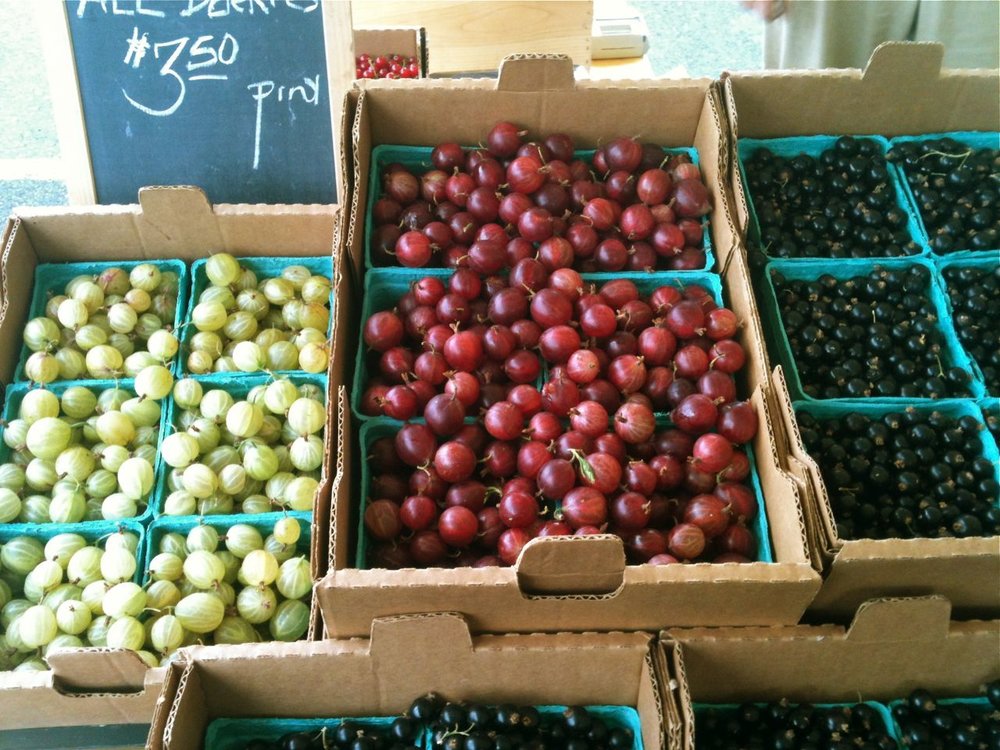Ayers Creek Farm Newsletter July 7 2013
Guest User
For Immediate Release
Gaston, Oregon, USA
6 July 2013
The Oregon Chapter of the Frikeh Producers' Council (FPC) announced today that mild, dry weather, and improved efficiency, assured a record frikeh harvest of the highest quality.
 Most of us are familiar with grains in their mature, dry state, which allows them to be stored for many years. However, in many places in the world, grains are also enjoyed in their immature (green) state as a seasonal delicacy. Throughout the middle east, from Egypt to Turkey, immature wheat is harvested, burned and threshed to produce frikeh (frik, firik, freekeh). Erroneously called an "ancient grain," frikeh is actually a way of processing wheat, not a different grain at all. Claims of its ancient status are dubious; what is certain is its delicious flavor.
Most of us are familiar with grains in their mature, dry state, which allows them to be stored for many years. However, in many places in the world, grains are also enjoyed in their immature (green) state as a seasonal delicacy. Throughout the middle east, from Egypt to Turkey, immature wheat is harvested, burned and threshed to produce frikeh (frik, firik, freekeh). Erroneously called an "ancient grain," frikeh is actually a way of processing wheat, not a different grain at all. Claims of its ancient status are dubious; what is certain is its delicious flavor.
The parching of emmer in caldrons was documented in Roman times by Cato the Censor around 200 BC, and in parts of southern Germany, unripe spelt is still treated this way to make grünkern. Frikeh is very different in that it is exposed to an open flame. There is scant documentation of this method of preparing wheat, and most of it from the 50 years. Some authors have speculated that it was originally produced using barley straw, but that makes no sense as the straw's flame is not hot enough. Anyway the straw was very valuable as bedding and packing material, and would not be wasted burning wheat. Possibly small branches from orchard and olive groves were used. Like our fellow frikeh makers in the Middle East today, we use propane torches, which are easier and safer to use.
The harvest of frikeh is done during the brief interval between the “milk stage” when endosperm is still liquid and the “soft dough” stage when the endosperm is solidifying. Too early and the grains shrivel; too late and the grains are no longer dark green and develop a starch quality. Frikeh of the best character is produced during a three day window in the ripening process. The wheat is cut and the sheaves are stacked on corrugated metal and the heads are lightly roasted. In addition to imparting a smoky flavor to the grain, the heating also stops the maturation of the endosperm. The sweet fragrance of the roasting wheat wafts through the valley. The charred heads are then fed into a thresher to separate out the grain. The grain is cleaned and then dried on shallow trays.
The finished frikeh is rinsed a couple of times and cooked for approximately an hour. Any remaining chaff and stems should be skimmed off during the rinsing or cooking. Frikeh may be used in any recipe that uses rice or bulgar wheat. It is traditionally served with lamb or chicken. The smoky, nutty quality of the grain adds a unique and new dimension to vegetarian dishes. The simplest is as a tabbouleh styled salad, perfumed with lemon and mint.
FPC spokesperson, Carol Boutard, notes that frikeh has different nutritional qualities than mature wheat. It is higher in minerals, especially potassium, calcium, iron and zinc, higher in dietary fiber, and low in phytic acid. Frikeh will be available at the Hillsdale Farmers Market this Sunday, 7 July. The market starts at 10:00 am.
We will also bring the following:
Tart Hungarian Cherries: Balaton, named for the large lake on the Danube.
Dry legumes: chickpeas and beans
Fenugreek and Purslane
Soft berries: In very limited quantities, been horrendous weather for these fruits.
 Ribes: gooseberries and black currants
Ribes: gooseberries and black currants
Preserves
We look forward to seeing you all at Hillsdale tomorrow,
Carol & Anthony Boutard
Ayers Creek Farm